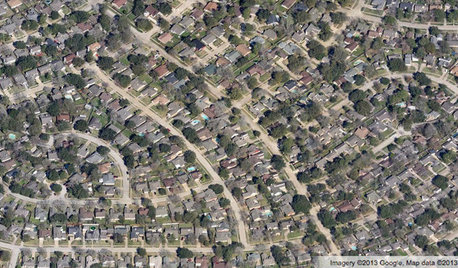New house, Septic/leach Field Replacement placed in escrow whois wrong
Mike Lebarr
3 years ago
Featured Answer
Sort by:Oldest
Comments (14)
Mike Lebarr
3 years agopamghatten
3 years agoRelated Discussions
veg garden over septic field??
Comments (22)yes i was expecting the one about the spinach and other greens leaves, we are kept abreast of the news world wide. but you are confusing the 2 surely the water that was sued to wash those greesn may have been the contamnient? and if the suers would have washed them then maybe nothing would have happened, or it could have been contaminated in the packing shed? i'm not sure if they ever realy found out any one thing to blame so just threw a blanket over it. we have the same products on our supemarket shelves come from all poins of australia, thee ash never been any health problem from people eating this product i ahve consumed my fair sahre of it, the packet does say wash before eating, but does everyone/anyone?? that is of course and etirely different scenero to someone growing as i ahve suggested i would above ground crops that we all wash in any case and most ge cooked. so best not for us to confuse the boundries let officialdom do that they do it best. yes there are and will be pathogens in septic water even into teh leach field but microbes and worms take care of them in that environment, the ae different ecoli bacteria all around the place the garden soils you work will have them not all are cause fatalities and some a stomach ache that is not debilatating. but no one is suggesting you drink the septic water or not wash hands thoroughly after all garden work, and no one is suggesting root crops which if eaten raw could very well pose a health problem, but if washed and cooked then no problem the health authorities say this. like they say if you tend to personnal hand hygene you will lessens you risk to different viruses passed on from contact of contaminated surfaces generally in public places. so again i ask you do you have hard case evidence of major group health issues and the health system being swamped maybe, i dunno a pandemic?? i see recall of meat products in the USA is this to be blamed on leach fields or bad processing practises? len...See MoreCan I put raised beds over a septic leach field
Comments (21)Well the general rule in container gardening is that the containers must have some form of drainage. Otherwise the water collects in the bottom, you get ponding of the water, bacterial growth, and root rot. I can't really picture containers made from "wire forms and concrete". That would be quite unusual IME but I would be worried about that weight on the field interfering with drainage in the field. Given all the drainage problems and shallow drain fields one reads about in many parts of Florida, especially with sandy soil, I'd be very reluctant to alter my septic drain field at all. And there are literally thousands of lightweight containers with drainage holes available for gardeners to use that can be easily moved and adjusted for sun exposure without creating problems for the filed. Unlike in-ground gardening Container Gardening has its own set of unique needs so I'd suggest some in-depth reading over on the Container Gardening forum here. Dave...See MoreSwingset over septic leach field?
Comments (20)From reading all of this it is now obvious to me that most people have very little if any knowledge of how a septic system really works. The vegetation covering a leach field is vital to the proper performance of the system. A septic tank is a large water tight rectangular or cylindrical tank made out of concrete, metal, fiberglass or plastic. The sewer line enters the tank on one end near the top of the tank. The discharge line to the leach field exits the opposite end of the tank 6" below the level of the sewer line. Inside the tank there is a baffle that divides the tank into two chambers, the sediment chamber and the digester, although in truth the digestion takes place throughout the entire tank. As the effluent enters the first chamber it is a mixture of water, fecal matter, soap, household chemicals, organic kitchen waste, human hair & skin cells, metals, plastics, paper, kids toys and no doubt a couple dozen golf balls as some idiot demonstrates his new toilet to the neighbors. As that mess enters the first chamber the heavier materials drop to the bottom of the chamber while the lighter floatable solids remain near the surface where they are slowly broken down into a thick slurry. The slurry then passes through the baffle and into the digestion chamber. Inside the septic tank there is a colony of "Anaerobic bacteria" (bacterial which thrive in the absence of air) that literally eat the waste and in the process the waste is converted to a gray water liquid. The gray water then flows into the leach field pipe system. In the leach field pipe system there is another colony of bacteria, only this time it is "Aerobic bacteria" (bacteria which thrives in air). The aerobic bacteria then eat the remaining waste in the gray water and they give off water and produce various nitrates. The final phase of the waste treatment process is done by the vegetation covering the leach field. The plants(generally sod) roots take in the water and nitrates. During daylight hours the plants take in some carbon dioxide through their roots from the leach field but generally they get the most of their carbon dioxide from the atmosphere. Through the process of "Photosynthesis" the plants use sunlight energy to convert the water and nitrates to the nutrients the plants need for growth. In exchange the the plants give off pure oxygen and water vapor into the atmosphere. Sod is the preferred covering over a leech field because a healthy stand of sod promotes earthworms which aerate the soil allowing air to get into the leach field pipe to support the aerobic bacteria colony. If you were to cover the leech field with P-gravel or mulch there would be no vegetation roots to absorb the water, nor would there be sufficient oxygen getting into the leach field to support the aerobic bacteria. The end result would be a saturation of the soil surrounding the leach field and the raw gray water would percolate to the surface creating a health hazard. I have lived in regions where they don't even allow you to sit a picnic table over the leach field, although I never heard of anyone getting busted for it....See Moreadvice on old septic & leach field
Comments (4)First, if there is a lot of large debris in there they may not be able to pump it out. And second, if you ever go to sell the place, it would need to be fixed properly before selling (especially if someone needs to get a loan which requires an inspection). It's better to fix it right. It currently sounds like a health and safety hazard. Do it while the weather is decent. I'm not sure what zone you're in, but if the ground freezes you may not be able to address the problem. If you hire someone to put in a new tank they may need to do a percolation test to determine the absorption rate of the soil. You could be talking thousands of dollars (for removal, new tank, install, etc.) so do some homework. We had a septic tank collapse on us. We didn't really notice it, except when all the kids came home to visit we had a slight back-up through the basement floor drain in storage room. Went outside to find a soggy mess on top of the tank location and a slight indent. The septic guys came the same day to tear out the old tank and install the new. It was during the first gentle snow of the winter season....See Morerockypointdog
3 years agomaifleur03
3 years agoMike Lebarr
3 years agoremodeling1840
3 years agoMike Lebarr
3 years agolast modified: 3 years agoJoseph Corlett, LLC
3 years agoncrealestateguy
3 years agokathyg_in_mi
3 years agohomechef59
3 years agoJudyG Designs
3 years agolast modified: 3 years agonickel_kg
3 years ago
Related Stories

UNIVERSAL DESIGNWhat to Look for in a House if You Plan to Age in Place
Look for details like these when designing or shopping for your forever home
Full Story
COMMUNITYGet a Bird's-Eye View of America's Housing Patterns
See the big picture of how suburban developments are changing the country's landscape, with aerial photos and ideas for the future
Full Story
TINY HOUSESHouzz Tour: A Custom-Made Tiny House for Skiing and Hiking
Ethan Waldman quit his job, left his large house and spent $42,000 to build a 200-square-foot home that costs him $100 a month to live in
Full Story
LIFE7 Things to Do Before You Move Into a New House
Get life in a new house off to a great start with fresh paint and switch plates, new locks, a deep cleaning — and something on those windows
Full Story
MOST POPULAR9 Real Ways You Can Help After a House Fire
Suggestions from someone who lost her home to fire — and experienced the staggering generosity of community
Full Story
DECLUTTERING5 Ways to Jump-Start a Whole-House Decluttering Effort
If the piles of paperwork and jampacked closets have you feeling like a deer in the headlights, take a deep breath and a baby step
Full Story
SMALL SPACESCould You Live in a Tiny House?
Here are 10 things to consider if you’re thinking of downsizing — way down
Full Story
REMODELING GUIDESThe Hidden Problems in Old Houses
Before snatching up an old home, get to know what you’re in for by understanding the potential horrors that lurk below the surface
Full Story
SMALL HOMESHouzz Tour: Rolling With Simplicity in a Tiny House on Wheels
Just 240 square feet, this California home encourages efficient living — but there’s still room for yoga
Full Story
LIFE12 House-Hunting Tips to Help You Make the Right Choice
Stay organized and focused on your quest for a new home, to make the search easier and avoid surprises later
Full Story







remodeling1840